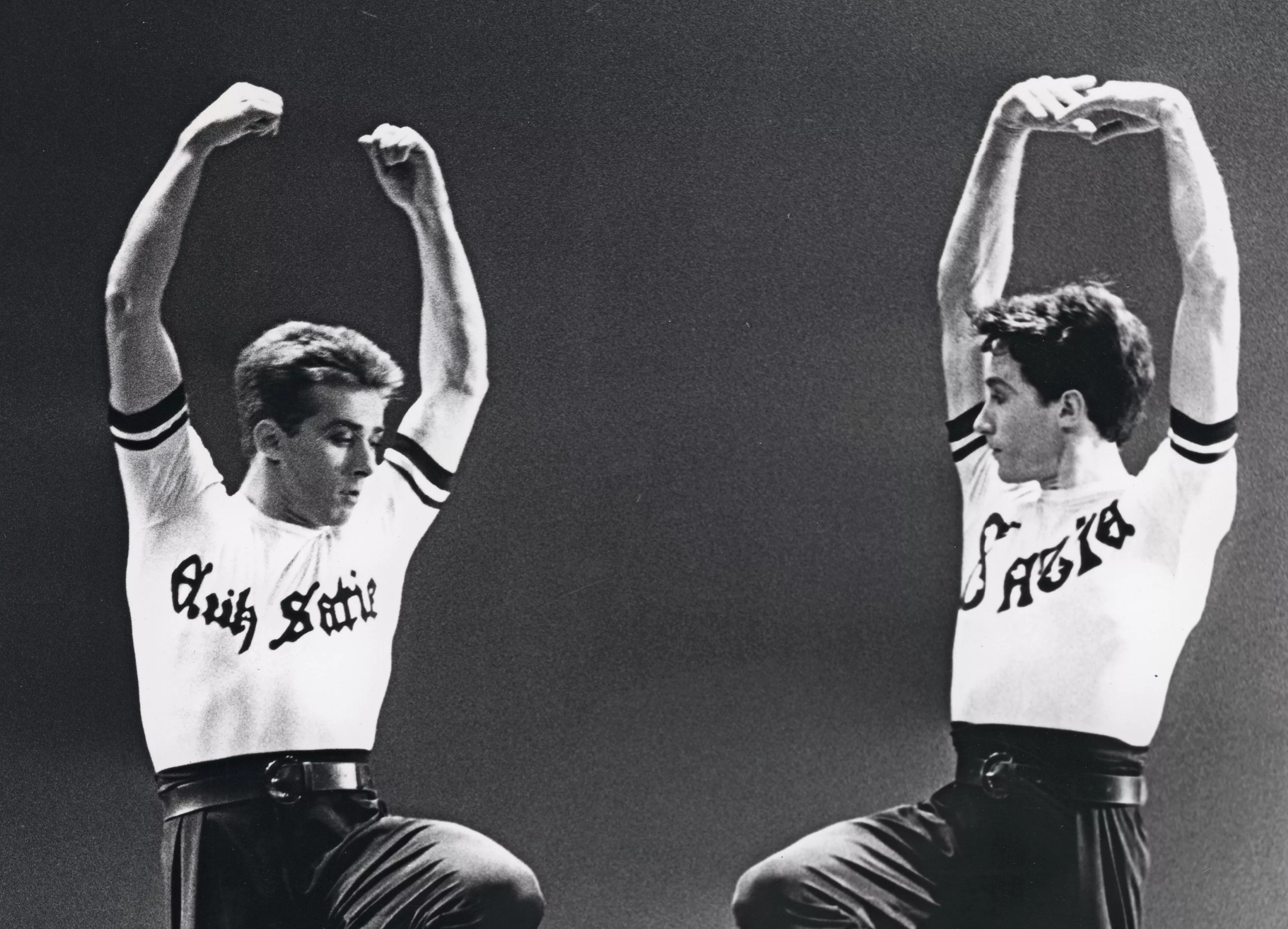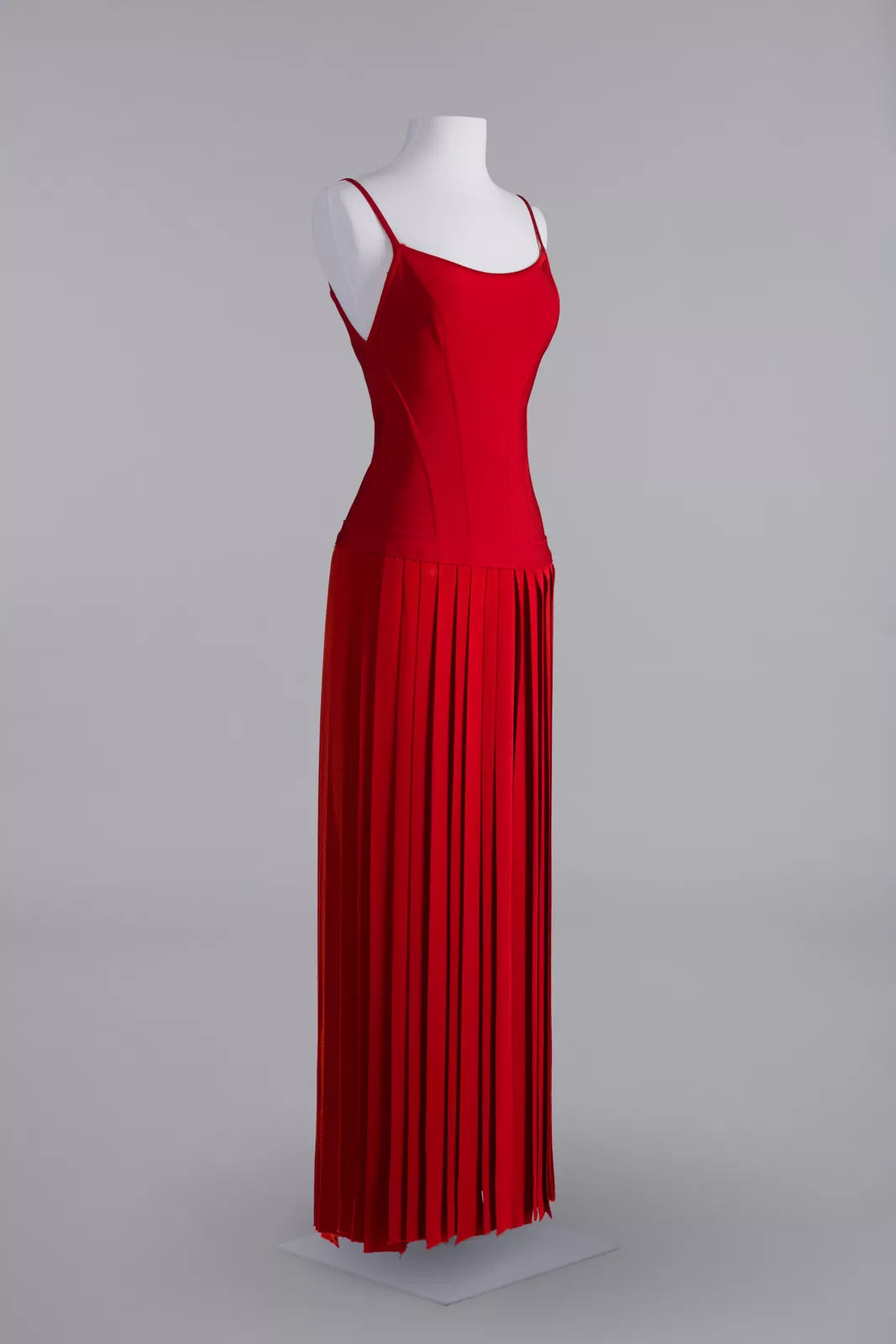Danser l’image
Current Exhibition
December 03, 2022 to April 30, 2023



read more
Le Ballet National de Marseille (BNM in French/NBM in English) is a company which was created by Roland Petit in 1972. From the beginning and under the influence of this ambitious choreographer, the history of NBM has shown an intense and profuse creative energy based on a substratum of collaborations with the artistic world of its time. Since September 2019, NBM has been directed by the collective (LA)HORDE uniting three artists, Marine Brutti, Jonathan Debrouwer and Arthur Harel. They put dance at the heart of their multidisciplinary practice, develop choreographic creations, films, performances and installations and have the project to “faire oeuvre en la structure” for NBM. Danser l’image celebrates 50 years of artistic decompartmentalized practices and unveils more than 130 costumes coming from collaborations with costume or highfashion designers like Yves Saint Laurent, Hervé Léger, Gianni Versace, Y/Project,
Ally Macrae and others.
Costumes, accessories, drawings, sketches and contemporary set pieces, as well as pictures, films, rehearsal and video recordings, programmes, posters, books and distributions form altogether an ensemble of tangible traces of life shaping NBM and producing its image. The testimony and the creations of contributors, authors and collaborators are enunciated through this corpus as a whole : choreographers, dancers, administrators, coaches, costume designers, dressers, technicians, artists and high-fashion designers… All of them have given NBM its ecstatic singularity. Due to its radical choice of artistic direction, NBM continues today to be the laboratory it has been for the visual experience of the danced gesture, the hybrid of exogenous material cultures. Without exhaustiveness, the exhibition showcases the stellar sequel of personalities who have made and make NBM’s nature, not to mention its heritage identity and the costume which is revisited by (LA)HORDE’s prospective insight as the center of gravity.
“[We] often [have had] the opportunity to present our performative work
and films in museum spaces, and we are both very honoured and excited for
having imagined a case capable of welcoming the histories and the works
of art that have passed through the institution we are now directing. (…)
Between the world of fashion and the world of installation, between the
museum’s white cube and the set design, (…) work would allow to displace
the original context of presenting pieces while evoking it in order to anchor
it in a space of projection which is both rough and dreamlike.”
(LA)HORDE
Costume. Fashion. Outfit.
Danser l’image exhibits stylistic, artistic and editorial collaborations: those of costume or high-fashion designers and creators such as Yves Saint Laurent, Gianni Versace, Y/Project, Hervé Léger and others; those of the stylist Ally Macrae, those of Harley Weir through images, those of (LA)HORDE through its realizations and films and those of NBM through its collection of iconographic archives. The costumes from Roland Petit’s ballets (Casse-Noisette, Les Forains, Le Loup, Le jeune homme et la mort, Parisiana 25, Tout Satie, Java for Ever, Hollywood Paradise and so forth), the costumes from Fréderic Flamand’s (La vérité 25 fois par seconde, to name just one) and also the costumes from (LA)HORDE (To Da Bone, for example) are shown throughout the exhibition. The aim is to make the public discover the choreographic creations of the institution via the presentation of its danced repertory organized in recomposed ‘tableaux’ of costumes and archival images.
Museum phantasmagoria. “Dancing on the edge”.
From a casino to a strange cloakroom, from a battle scene to a recreated crazy scene next to a limousine, the cinematographic dimension of the sets constitutes the blueprint of the exhibition. The expressive body language of the mannequins (repetitive gestures, jumps, fights, series, stretching or cascades) invites the visitor to reread the costumes staged in this vivid dynamics. The scenography which was co-realized by (LA)HORDE with Julien Peissel and the curator Mathieu Buard plays on the spectacular dimension of a paradoxically lively reconstitution and the museum spirit, on theatre and archives, where the costumes draw NBM’s multifaceted story.
The Archives. The Book.
The Future. An exceptional book completes the exhibition. Danser l’image. Le Ballet National de Marseille – direction (LA)HORDE is the restitution of archeological excavations of the recent present, whose guiding thread is the stage costume. The book illustrates the creations, the encounters and the inspirations which have built NBM’s identity. As the book encompasses 468 pages, 1 300 pictures taken under Alice Gavin’s creative direction, essays by Mathieu Buard and Delphine Pinasa, as well as numerous interviews of Harley Weir, Isabel Marant, Emanuele Coccia, Lasseindra Ninja, (LA)HORDE, Alice Gavin, Salomé Poloudenny, Nicole Murru, Valentina Pace et Thierry Hauswald, this open archive constitutes a subjective zone of NBM’s history, an exemplary resource bringing to light the diversity and the future of this living cultural heritage. Available in November 2022. JBE Books, ed. In conjunction with the National Center of Stage Costume and the National Ballet of Marseille. With the support of the Isabel Marant Foundation.

Book cover Danser l'image ©Harley Weir Direction images Alice Gavin Services
Le Ballet national de Marseille
Le Ballet national de Marseille is among the great choreographic French companies of international renown. Since the early nineteen-seventies, it has been considered one of the major precursors in the world of dance. Fifteen years before the launching of the Centres Chorégraphiques Nationaux, the city of Marseille entrusted Roland Petit, one of the leading French choreographers, with the direction of Les Ballets de Marseille. For the 1972 inauguration, Roland Petit produced a new work entitled Pink Floyd Ballet. For more than twenty-five years, the choreographer has created or recreated a large number of pieces for the company including among others Les Forains, Carmen, Notre-Dame de Paris, Proust ou les intermittences du coeur, Parisiana 25, Les Amours de Franz, Coppélia and La symphonie fantastique. After his departure, the direction was first passed on to Marie-Claude Pietragalla (1998-2004) who created nine choreographies, and then to Fréderic Flamand (2004-2014) who carried out Titanic, La cité radieuse, Orphée et Eurydice, Métamorphoses or La Vérité 25 fois par seconde and many more. The duo composed of Emio Greco and Pieter C. Scholten then took over and produced notably Extremalism, Momentum, and Apparition I Disparition. Since September 2019, , NBM has been directed by the collective (LA)HORDE – Martine Brutti, Jonathan Debrouwer and Arthur Abel –, which centers and develops its choreographic pieces around films, performances and installations.